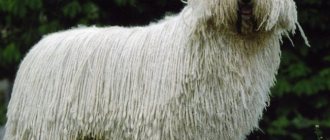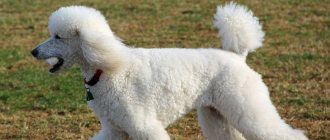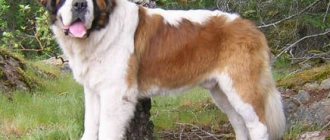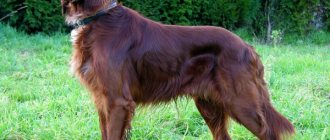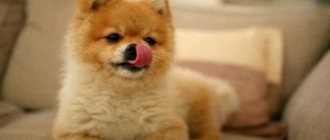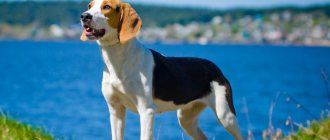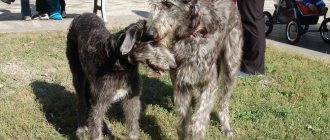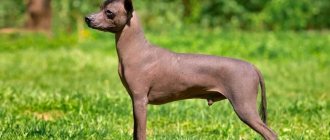Horse management
Owning horses is not a cheap pleasure. There are several systems for keeping these animals. They are designed for different climatic conditions. The choice often depends on the number of horses on the farm and how they are used. So, the main content systems:
- herd;
- improved herd;
- cultural-herd;
- stables;
- stables and pastures.
Herd systems
Keeping horses in herds is one of the oldest methods used by nomadic peoples. According to him, horses graze freely together on pastures, and their mating takes place there. Sheds are arranged for them, where additional food is placed. This is how stallions and mares become attached to their home.
With an improved herd management method, special fenced sheds are installed. They hide the most valuable breeding stallions and mares with foals from bad weather. With the cultural method, the house is made more durable. The herd is divided into groups based on age and gender. If horses are kept for milk and meat, the size of the herd can be up to 400 heads. 20 stallions and 100-150 mares are selected for breeding.
Stable systems
In stables, horses are kept either in stalls or stalls. When kept in stalls, horses are separated from each other by small partitions about 1.5 m high. The stall is a separate room with a door for each horse. Basic requirements for a stall:
- The walls do not have to be solid; they make a blank partition 1.4 m high, and the rest of the space is covered with a lattice. The weave should have a gap area of up to 6 cm so that a horse rearing does not get its hoof stuck in the grid.
- The door height is 2.4 m, width is 1.2 m, it should open outwards (into the stable or directly onto the street).
- The area of the stall is 3x3 m, the horses lie down freely in it.
- Next to the stall, on the street, there is a paddock or levada for walking. For one breeding stallion, its area should be 600 m², training grounds for horse training - 400 m². You can make a paddock for several horses at the rate of 20 m² for breeding stallions and 12 m² for the rest.
The height of the stable when kept in stalls or stalls should be at least 3 m, it should be equipped with good ventilation. It is not necessary to install heating in the stables. Floors are made of adobe, wood or expanded clay concrete. The bedding is made of straw. When kept in stalls, its thickness should be 50-60 cm, the straw is changed twice a year. When raising horses in stalls, the bedding is thinner, but it must be changed daily. The stables should have additional premises:
- forage for concentrated feed;
- room for roughage;
- bedding storage room;
- horse shower;
- harness;
- mating arena;
- room for artificial insemination;
- storage space for equipment.
When keeping stables and pastures, the requirements for the barn are the same. The only difference is that in the summer the horses are turned out to graze on pastures, much like the herd method.
What does it eat?
The main diet of a horse is grass.
Horses are herbivores. The basis of their diet is food of plant origin (grass, fruits, vegetables, leaves, roots, grains). They love to eat young stems, tree bark, seeds and nuts.
The feed for domestic horses must include: oats, corn, beets, carrots and apples. In the summer, horses graze on pastures, eating fresh grass and leaves, they receive the micro and macroelements necessary for full growth and development. With the onset of cold weather, hay replaces fresh vegetation.
Special purpose riding breeds
The main types of horses used for riding are divided into the following breeds.
Akhal-Teke
Akhal-Teke horses are the standard of grace, attractiveness and elegance. These animals were known 5 thousand years ago. They owe their name to their place of origin - the state of Akhal-Teke, which was located on the territory of modern Turkmenistan. The need to breed horses was a necessity for local residents, so the owners carefully monitored the living conditions of the animals. The owners did not allow Akhal-Teke horses to be crossed with other horses - thanks to such a reverent attitude, they managed to maintain the purity of the breed. Modern Akhal-Teke horses are practically no different from their ancestors.
Akhal-Teke horses are the standard of grace
Arabic
The Arabian is the oldest breed of horse, which does not lose its value even today. It was these animals that had the maximum influence on the development of other species. Purebred Arabian horses were widespread in the Gulf countries. The breed developed in a hot, arid climate, which affected the character of the animals. These are strong, hardy horses that easily adapt to negative natural factors and retain the ability to reproduce offspring in any conditions.
Thoroughbred
One of the fastest breeds is a thoroughbred horse, bred in England in the 17th century thanks to the crossing of Arabian horses and local horses. They are actively used both in professional equestrian sports and for leisurely walks.
Terskaya
Terskaya was formed in the 20s of the last century by crossing Arabian stallions with Russian breeds (Donskaya, Streltsy, etc.). These are strong, powerful animals that easily adapt to cold climates. Due to their ability to learn, they are used in equestrian sports, horse riding training, and agriculture. They often perform with Terek horses in the circus.
Human interaction
Man and horse have been getting along well for several thousand years.
More than 5 thousand years ago, horses were domesticated. At first, people used their skins to insulate their homes and made clothes and shoes from them, and the meat was eaten. Later, people figured out how to use smart and strong animals in agriculture and use them for transportation. They were indispensable helpers in difficult war times.
Interesting fact : horses were first used on the battlefield in the 3rd century BC. e. At the end of XI the horsemen appear. Horse riding gained popularity during the time of the knights (13th century).
Thousands of years later, the importance of horses in human life is only growing. They are involved in many industries: agriculture, tourism, sports, light industry. Kind, affectionate animals help people treat many diseases. The effectiveness of hippotherapy has already been proven by scientists.
Horse breeds with photos and names
Welcome to our extensive section on horse breeds. It's no secret that all horses differ in various ways. To group breeds, many classifications are used based on origin, structure, economic and productive use, distribution areas, and so on.
In our country, breeds are traditionally distributed according to the zootechnical classification proposed by A. S. Krasnikov (1978):
Factory and transitional:
Any breed can easily be classified into a certain group based on the sum of its characteristics; often even the names of the breeds indicate their classification. For example, the Ukrainian riding breed, the Oryol trotter, the Soviet draft horse, the Belarusian harness breed.
Some horse breeds have been known since ancient times, but the main variety of breeds appeared in the eighteenth and twentieth centuries. Since the second half of the twentieth century, sporting breeds have become most promising, due to the decline in the importance of cavalry and the development of mechanization.
To choose a horse breed, you should thoroughly study all the features that depend on the history of origin, the characteristics of use and maintenance, the current state of the breed, and much more. All this information is contained in full in the breed descriptions in this section of the site.
The history of the origin of the breed is important for understanding some of the characteristics of a particular breed. So, for example, knowing the colors of the breeds involved in the development of a new breed, you can say exactly which colors will appear in the breed and which ones cannot exist. Or, taking into account the characteristics of indigenous breeds, for example, the strong hoof horn of mountain breeds, one can expect the appearance of these characteristics in transitional and factory breeds that carry the blood of those local breeds.
Each breed has a purpose, a trait for which selection was carried out. Therefore, when choosing a horse breed, its economic importance plays an important role. After all, it would hardly occur to anyone to use a thoroughbred riding horse to transport logs, just as it would hardly occur to anyone to demand high results from a Percheron in show jumping. But there are quite versatile breeds that can perform various tasks with good performance. Thus, friezes are good both in the harness for which they were bred and comfortable under the saddle. Often such versatility is inherent in draft and native breeds.
Horse breeds also have external differences, such as height at the withers, characteristic colors and many others. Thus, Friesians can only be black, Mavaris have a very remarkable ear shape, some horses of the Transbaikal breed have curly hair, and Akhal-Teke horses have mostly golden colors. The average height of horses of factory breeds is 155-180cm, of native breeds 130-150cm, but there are exceptions. Shires, Brabançons, Percherons are huge, and Falabella are the tiniest horses.
Horse breeds have differences in character and temperament. This is also an important indicator for choosing a breed. Akhal-Teke horses are considered ardent, hot-tempered, Hanoverian horses are persistent, honest, Friesians are friendly, most draft and draft breeds are phlegmatic.
Photos of typical representatives of the breeds give a clear idea of the horses. Exterior photographs, photos in motion and at rest, as well as characteristic colors are presented, which help to diversify the assessment of the breed.
All these and some other characteristics and features of the breeds are described in detail in the section and will help you determine your breed preferences or choose the horse breed you like best.
Classification
According to the exterior and general constitution, which largely depend on the appropriate upbringing and feeding, a distinction is made between draft horses (heavy-duty, agricultural, carriage or saddlery), riding and pack horses, trotting and racing horses.
Various horse breeds are grouped by:
- zonal and climatic characteristics:
forest; - steppe;
- mountain;
- riding;
- cultural;
- factory;
In the Soviet Union, a comprehensive classification of horse breeds was adopted, which, on the one hand, took into account the type of economic use, on the other, the degree of influence of natural and artificial selection, as well as the natural zones that formed the breeds.
In accordance with this classification, breeds are divided into:
- factory
(the predominance of artificial selection, increased demands on housing and feeding conditions, which pays off with increased performance and specialization). They are divided into: riding; - light-harnessed;
- heavy-duty;
(best adapted to natural conditions, unpretentious and undemanding, but small and less efficient). They are divided according to the natural zones in which they were bred and to which they are adapted:
- northern forest;
(often created by crossing the first two types). They simultaneously have signs of division of both local and factory breeds, but economic specialization (riding, draft or heavy draft type) is less pronounced in them than in factory breeds.
Pony
Breeds of ponies
(the smallest horses) can also be classified as:
- local (for example, the smallest Shetland pony, crushed in the harsh conditions of the Shetland Islands)
- transitional (improved by factory breeds) (Welsh)
- even almost factory-made ones, bred in the 20th century specifically for children's sports (riding ponies (name of breeds) in England and Germany)
The height bar for ponies in Western Europe is very high (up to 140 cm), and practically both steppe and northern forest horses have to be included in this group according to the Western classification.
Draft, or draft, breeds have been bred for a variety of agricultural work since the Middle Ages.
Draft horses are large, calm, strong horses.
Suffolk breed
Of course, now their use as draft power has noticeably decreased, but this does not prevent the preservation of such breeds as:
- Clydesdale;
- Suffolk and Shire in England;
- Ardennese in a number of Western European countries;
- German Mecklenburg draft;
- Norikean;
- Rhenish-German;
- Rhenish-Westphalian;
- Saxon-Thuringian;
- Schleswig
And some other breeds of heavy trucks (for example, Württemberg) are reoriented towards sports. English breeds of heavy draft horses played a decisive role in the development of a number of similar breeds in Russia.
By characteristics
The classification of horse breeds has not yet been fully developed.
Based on skeletal structure and other characteristic general differences, the numerous horse breeds can be reduced to the following three types:
- Norian (aka Lowland, European, Germanic, Northern, Occidental).
- Eastern (oriental, or Arabic).
- Mongolian.
In addition to purely zoological characteristics, the difference between them also manifests itself in other, purely agricultural ones.
Eastern type
Characterized by a small and wide head, large eyes and a “pike” profile. All the bones of both the skull and the entire skeleton are thinner, but denser than those of the Norian.
The Eastern is smaller in stature than the Norian, narrower, drier, later ripening, feeds and holds the body worse, and therefore is pickier and more voracious in feeding, not so strong, but faster on the move, hardy, energetic, willful, more intelligent (A. Armfeld) .
List of breeds:
- Arabic;
- English thoroughbred;
- Akhal-Teke;
- Anglo-Norman;
- Percheron;
- Belgian;
- Azerbaijani: Karabakh horse;
- Deliboz;
- Cuban pacers;
Norian type
Clydesdale
has a developed facial part at the expense of the cranial part, the entire skull is longer and narrower, the eye arches protrude slightly, the profile of the head is convex, especially in the nasal part.
The Norian horse is large, massive, rich in muscles, has powerful bones, is precocious, digests food well and holds the body, is strong, not particularly hardy, is not fast on the move, obedient, lethargic, phlegmatic, cold-blooded, less intelligent, etc.
Western breeds received the name Norian due to the Pinzgau breed.
List of breeds:
- Clydesdale;
- Bityug;
- Swedish (horse breed);
- Don horse;
- Oryol trotter.
Swedish
For the small Norian horse, the breeds common throughout the north of Europe under the name Norwegian, Breton, Norman, etc. are extremely typical.
These are small horses, adapted to areas with poor food, and are equally suitable for work and riding. This also includes various ponies, such as Scottish, Welsh, Exmoor, New-Farest, but their performance is insignificant.
In Russia, several subbreeds of this type are distinguished, which have received greater or lesser independence; Of these, the most remarkable are two kleppers and a Swede.
A more or less pure type of Norian horse is also represented by the Zhmud, Obvinsk, Vyatka, Kazan and Mezen horses, also of a fairly constant breed; different colors, not savrasaya, red and nightingale, with a belt on the back, is considered especially typical.
Under the influence of unfavorable feeding conditions and poor selection of breeds (except for Zhmud), they gradually degenerate, and large horses are the exception among them. Peasant horses should also be included here.
Mongolian type
In terms of dry build and height it is close to the eastern one, but the special structure of the skull, different from the first and second types, and the absence of chestnuts on the hind limbs (horny warts on the inner surface of the legs) force it to be distinguished into a special group.
The Mongolian type has many representatives in the steppe part of Russia. The conditions of their keeping are very different from the usual raising of horses.
Both among nomadic peoples and among some breeders, horses are divided into separate schools or herds; each such group consists of mares, numbering from 10 to 20, with sucklings, one and two years old, under the leadership of one stallion.
Such maintenance is the main obstacle to the improvement of steppe horses by stallions of cultivated breeds that cannot stand the conditions of herd life, and in addition, it is always very difficult to feed and properly raise foals.
Of the steppe horses, which are generally more suitable for riding, the most common are the Kyrgyz.
Not all existing breeds, however, fit into this group. Many of them represent horses of mixed origin, resulting from crossbreeding, which was especially often practiced between horses of the Eastern and Norian types.
In terms of numbers, the Mongolian type of horses, better known as steppe horses, predominates. According to the Chinese, horses of this type are tamed for 6000 hp. ago.
From the Asian steppes, where they are mainly bred, in connection with the settlement of the Turks in the 4th century. They also settled in the steppes of southern Russia and the deserts of Hungary.
The more cultured eastern horse has become known since the time of the Prophet Muhammad, who even included the breeding of noble horses in the code of religious beliefs.
Since the Crusades, the eastern horse has become widespread and has had a decisive influence on the transformation of European horse breeding.
The Norian horse had two representatives in prehistoric times: one small, the other large type. It is believed that modern ponies and the small native breed of horses of the northern states originated from the first, and the heavy trucks of Central Europe originated from the second.
The breeding of the latter was greatly influenced by the development of medieval knighthood, since their heavy weapons required horses of considerable strength and size.
From the continent she is in the 12th century. was transported to England, where, under the influence of abundant feeding, it reached a truly enormous size.
Show horses
There is a special category of horses of rare colors that can move with special types of gaits. These are the so-called show horses: American Cream and White, Appaloosa, Palomino, Pinto, Paso Fino, Missouri Foxtrotter, Falabella, etc.
Over the past ten to twenty years, even specialized breeds of horses for show have appeared:
- American Golden Horse;
- American miniature;
- araappaloosa (a derivative of the Arabian horse and the forelock appaloosa);
- Quarab (a derivative of the Quarter Horse and Arabian breeds);
- Morab (a derivative of the Morgan and Arabian breeds);
- Pintabian (derived from the Arabian and Pinto horse breeds);
- national show horse (a derivative of pure “Arabs” with a large American horse);
- river horses (have a special gait, not similar to the usual walk, trot or amble).
History of the breed
In the Czech Republic in the 16th-17th centuries, Neapolitan and Andalusian horses were crossed, as a result of which the kladrub appeared. The name was given almost immediately after the name of the village in which the work was carried out - Kladruby nad Laboj and is translated as “cutting down”. The breed was bred as a specialized breed, intended for the king, queen and court retinue, in the royal Kladrub stud farm. The intention was to breed very beautiful horses - decoration of the yard, used in all kinds of ceremonies, for trips and walks. At that time they were widely used by the Habsburgs. Perhaps it was the connection with this famous family that influenced its preservation after so many centuries.
They were a great success. In 1757, the plant's archive burned down, and a lot of information on breeding, its features, and differences was lost, which can no longer be restored. In the 19th century, the preservation of the breed was in great doubt. The reason for this was that Spanish horses throughout Europe were supplanted by English ones. An admixture of English blood might not have spoiled the Kladrubs, but it would have cast doubt on their purebredness. Therefore, the plant for their breeding did its best to isolate the breed from external influence, and it still managed to avoid mixing different species.
In the 1930s, many black stallions were sold for meat; only a few of this color remained. But already in 1938, their numbers began to be controlled and monitored so that they did not disappear altogether. Today, white kladrubs continue to be bred at the same plant, and intensive work is underway to restore the black color.
How long do horses live
Life expectancy depends on several factors, including breed and environment. As a rule, domestic horses live from 25 to 30 years, the maximum record is 61 years. The longest-living horse in nature was registered by zoologists in 1974, its age was 36 years. Factors influencing life expectancy include:
- nutrition;
- what type of activity is the animal used for?
- number of reproduction cycles;
- reproductive status;
- past illnesses;
- dental health;
- physical activity.
Horse breeds: photos
All types of modern horses are bred by selective breeding; wild representatives of this species are practically not used for work and sports, since they are less adapted to existence in captivity. But over the past couple of millennia, man has created many varieties to suit their different uses. Horse breeds delight lovers of these animals with their diversity.
Arabic
Arabian horses have always been famous for their endurance and beauty. These horses were often taken as a purebred base for developing a new breed. There are Anglo-Arabs, half-breeds and pure Arabian horses. Anglo-Arabs were bred by crossing Arabs with purebred horses. Pure Arabian horses are the only purebred breed, since this breed was kept pure, without the admixture of other breeds. The photo horse breeds presented on our website are impressive in their diversity: American cream, Batak pony, Breton, Hungarian and others.
Heavy
This breed originated from stocky horses that lived in the forests of central Europe. Most of the heavy horses can work hard and can be used as draft horses. Basically, when choosing such a horse, they base it on its working qualities, using them on the farm.
Bedrock
This breed of horse can be preserved in a specific territory without crossing it with other local breeds. Depending on the region, some horse breeds are protected by law, the pure stock remains unchanged, this helps in the future to use some of them for selection, using their best qualities.
Heavy truck
This is a workhorse with the muscle, stamina and build to carry heavy loads. Heavy horse breeds were used in ancient times in villages for transporting things, goods, products, hay, etc.
Half-breeds
The horse's pedigree contains an admixture of Arabian blood, which is considered an improvement of the breed. Such a half-bred horse is as noble as the hot blood predominates in him during breeding. Horse breeds and photos on our website are presented by these types of horses.
Pony
Such ponies, beloved by children, have a height at the withers of 1.52 m or less. Ponies also differ from horses in their proportions. Compared to horses, ponies have a disproportionately large body when compared to their height. Ponies have short legs, so the way they walk is different. There are a lot of horse breeds and photos on our website.
Riding horses
The gait and structure of light horses allows them to become riding horses. The gait of such a horse should be distinguished by evenness, correctness, freedom, and good functioning of the pelvic limbs. The canter, trot, walk and canter must be executed flawlessly by the saddle horse.
Trotters
These horses are distinguished by a straight neck, withers that are less protruding, and when trotting, the wrist is used. The main type of movement of a horse is the trot. This is when the move is sweeping, fast and free. Horse breeds photo trotters are beautiful and noble.
Jumping horses
These horses are classified as riding horses. These horses must have distinctive structural features. The back of such a horse should be strong and short. Horses with long backs cannot jump well. Strong and dry joints in the legs are especially important.
It is worth noting that most of the horse breeds have a narrow specialization in work. Of course, they can be used for other purposes, but they achieve excellent results only if they are used for their intended purpose, in the industry for which it was developed.
Rare and unusual species
Horses are man’s faithful friends; for centuries they have helped people survive, transported heavy loads, kept them warm and saved them from death in battle. Modern life has brought many breeds to the brink of extinction, as the need for horses has disappeared.
One of the rarest breeds is the Sorraia. This is a short horse with an inexpressive gray color, originally from Portugal. About 200 heads of Sorraia have survived. The unprepossessing appearance led to the fact that people did not breed Sorraya, and the breed was on the verge of extinction.
The following breeds are considered unusual:
- American Paint Horse. The horses are short (140-160 centimeters), piebald in color. The main difference between the breed is the combination of spots of white and other colors. Painthorse literally means "painted horse".
- Cream Akhal-Teke. The rare color gives the horses a special charm and increases the price.
- Knabstrupper. Bred in Denmark. The spotted color of the skin is a characteristic feature of the breed. There are the following types of spotting: leopard, saddleback, marbled and trout.
- Appaloosa. Divorced in the USA. Short horses with forelock color even have spots on their skin.
- Marwari. The famous Indian breed is distinguished by its unusually shaped ears, which almost touch and rotate 180°.
Among the unusual ones are horses with an uncharacteristic, rare color. These colors include pearl, champagne, leopard, and raven roan.
Description
Don horses have excellent health and endurance; they also have such characteristics as a sense of responsiveness to human care and a special kind of intelligence. This individual does not like to sit idle - Donets always need training and employment, otherwise the horse’s character begins to deteriorate and it becomes quite difficult to control it. A riding horse of Don blood copes well with any load, and its power and good handling allow us to draw the conclusion that if you need a hunting horse, you simply cannot find a better option.
The Don horse can reach maximum speed in a short period of time, so it is valued for its speed of reaction, using this property during sports competitions. In addition, the horse has proven itself well when riding in a harness, and this horse also turned out to be indispensable for riding along narrow streets - it is especially good at maneuvering during a chase, for which this breed is valued by mounted law enforcement officers.
The endurance of the Donchak should be mentioned separately - this breed is one of the ten leading breeds around the world. The strength and endurance of the breed, good trainability and high intelligence allow Don horses to take part in sports such as show jumping, dressage, eventing, and cross-country races.
Exterior
Don breed horses have a beautiful and correct body structure, which is the result of many years of genetic work by horse breeders. The withers of horses are high, from 150 to 173 cm. The head is of medium size, with a wide forehead and a short occipital part. The ears are proportional to the head, small and mobile, the ends of the auricles have pointed ends. The eyes are large, with a beautiful cut, dark, almost “bottomless”. The neck is long, arched in a beautiful arch, without excessive fat deposits.
The mane and tail are thick and soft, of medium length, the shade of the strands is slightly darker than the main color of the horse. The body is slightly elongated, massive in structure, the back is slightly convex, the chest is wide, and the croup is wide and sloping. The legs are long, the joints are strong, the pastern girth is 19-20 cm, the hooves are wide and stable. The weight of an adult horse ranges from 400 kg.
Among the shortcomings of the breed, experts pay attention to the weak area of the back, moderately developed thigh muscles, and it happens that the hind legs have a saber shape, which complicates the gait. In addition, for the purity of the breed, it is necessary to pay attention to the development of the shoulder blades and joints, especially the front girdle of the limbs
Color
Don horses have a characteristic coloring, thanks to which this breed cannot be confused with others. There are colors of golden-red, red-bay, dark bay, and there are also representatives of this breed of black and gray colors. The Don people often have a white color on the head and legs.
Character
Donchaks are distinguished by a calm disposition, they are easy to train and willingly make contact with people. Moreover, these horses are capable of becoming a faithful and devoted friend to those who carefully look after them. The special character of the Donetsk people developed over decades in the conditions of military service. It is believed that the Don breed of horses is one of those that choose one owner for their entire life. At the same time, the horse may show distrust and even some degree of aggression towards strangers.
Racing Oryol trotter of mixed type
The breed was created by crossing representatives of many other breeds by Orlov.
The breed was created by crossing representatives of many other breeds by Orlov, after whom it was, in fact, named. In Russia, the most popular type is the bushy type of Oryol trotter - large, massive animals with a beautiful head, expressive eyes, a high, beautifully curved neck, a wide chest and strong hooves. Their height ranges from 1,550 to 1,740 mm, and their weight is up to 676 kg.
Oryol trotters are distinguished by the beauty of their running, enormous strength, agility and endurance during heavy work. At the same time, horses have a very gentle disposition.
Care required for horses
Feeding
It is very important to organize daily feeding of horses at the same time
The diet must be of high quality and balanced. In addition to natural feed (grass and hay), it must include grain (oats or barley), vegetables, fruits, mineral supplements and animal feed. The diet itself must be adjusted depending on the age and physical condition of the animal, time of year, gender and other factors.
It is important to observe the correct single dosage for each food distribution. Overfeeding is no less harmful than underfeeding, so daily and one-time portions must be calculated in advance and correctly. This calculation is made based on the age and live weight of the horse.
As a rule, for every 100 kilograms of weight, five kilograms of feed are needed. In the summer, when the horses of the main herd are kept on pasture, as a rule, they have enough plant food eaten per day, and they do not require additional feeding
This calculation is made based on the age and live weight of the horse. As a rule, for every 100 kilograms of weight, five kilograms of feed are needed. In the summer, when kept on pasture, the horses of the main herd, as a rule, have enough plant food eaten per day, and they do not require additional feeding.
Cleanliness and hygiene
Cleaning the skin is usually carried out using special brushes and scrapers, taking care not to injure the animal. This procedure begins on the left side of the horse, moving from the head to the back and then moving to the legs. The mane and tail are combed using metal combs; if they are sparse, you can use plastic ones.
After cleaning, the wool is wiped with a piece of cloth or suede. Hooves are cleaned with special brushes and hooks with blunt ends. In summer, horses usually wash themselves in natural ponds, and in winter they are bathed with a hose.
Horseshoe
In addition to cleaning the hooves, they must be protected from possible injury. This function is performed by horseshoes, the condition and timely replacement of which must be carefully monitored.
Not everyone can shoe a horse. This requires experience and special skills, so it is better if it is done by a competent, qualified specialist.
Bibliography:
- A.P. Soldiers. Basics of animal husbandry. — 3rd ed. - M.: Agropromizdat, 1988.
- Animal husbandry // Great Soviet Encyclopedia: / Ch. ed. A. M. Prokhorov. — 3rd ed. - M.: Soviet Encyclopedia, 1969-1978. (Retrieved April 5, 2012)
- Animal husbandry - Wikipedia
- Animal husbandry // Encyclopedic Dictionary of Brockhaus and Efron: in 86 volumes (82 volumes and 4 additional). - St. Petersburg, 1890-1907.
Mongolian race horse of Mongolian type
The main horse breeding base of the breed is located in the steppes of Inner Mongolia.
The main horse breeding base of the breed is located in the steppes of Inner Mongolia, where there are excellent pastures. These horses are very numerous, numbering approximately 16,000,000 heads.
The size of representatives of this breed is not large. Their height is no more than 1,220 mm. A typical Mongolian horse has a large head, wide forehead, straight neck, large ears, low fleshy withers, wide chest, straight back. The legs of these tough little animals are short, strong, muscular and dry.
Large breeds - working horses photo
Belgian horse. Since ancient times, two main types of horses have been bred in Belgium: the lowland horse, the Flemish horse, and the mountain horse ~ Ardennes. The need to have a strong horse for working with heavy agricultural implements and the demands of cities force the Belgians to breed a heavy horse.
The Ardennes, being less strong, less tall and less massive, are gradually disappearing. In the near future, these horses will disappear completely. The large Belgian horse - Brabantsu has a height of 1 m 55 cm - 1 m, weight - about 800 kilograms, varied color: bay, red, roan, black and gray. Horses of this breed are early maturing: at 2 years old they are already fully functional.
The head of the Brabansen is large, but dry, the neck is short and thick, the chest is wide and deep, the back is of medium length, muscular, the croup is forked and somewhat drooping, the legs are dry and strong with small brushes. The volume of the leg under the wrist is about 26 cm.
The horse is very strong and suitable for carrying large loads and at the same time quite mobile, is not prone to colds, is indiscriminate in its feeding and uses it well. In our country, Brabançons are bred quite well by peasants - and they happen to be from peasant queens. They convey their qualities well to our peasant horses.
English racing horse of Arabian type
The breed was obtained by crossing local horses with several eastern racing breeds.
English racing horses are distinguished by the beauty of their slender forms, dry structure, energy and running speed taken from eastern horses, as well as a massive body and tall stature, for which we should thank the local English horses.
The height of animals is from 1,510 to 1,730 mm. The offspring of the English racehorse fully inherits from their parents all their beneficial properties: tall height, large lung and heart capacity, dense muscles, strong bones, lean build, and the ability to run energetically and quickly.
List of horse breeds:
- Abyssinian
- Abstang
- Abtenai
- Avelinskaya
- Australian Cattle
- Australian half-breed
- Australian draft
- Austrian half-blood
- Adaevskaya
- Azerbaijani
- Azores
- Albanian
- Altai
- Alter real
- American Horse
- Austrian half-blood
- American Quarter Horse (American Quarter Mile)
- American cream
- American curly
- American Paint Horse
- American Standardbred
- Anglo-Norman
- Andalusian
- Anglo-Arab
- Appaloosa
- Ara-Appaloosa
- Arabic
- Arden
- Argentine
- Ariègeoise
- Auksua
- Akhal-Teke
- Aztec
- Bavarian half-breed
- Balearic
- Belarusian sled
- Belgian half-breed
- Barbary or barbary
- Bashkir
- Bityug
- Bosnian
- Brabançon (Belgian worker)
- Brazilian sports
- Brumby
- Brandenburg
- Breton
- Budennovskaya
- Boulogne
- Wielkopolska
- Hungarian half-blood
- Westphalian
- Vladimir heavy truck
- Eastern Bulgarian
- Württemberg
- Vyatskaya
- Hanoverian
- Gaflinskaya
- Hydran
- Dutch
- Holstein
- Gonter
- Groningen
- Danish half-blood
- Deliboz
- Destrieux
- Jebe
- Donskaya
- Zhemaitskaya
- Iberian
- Irish sports
- Irish draft
- Icelandic
- Kabardinskaya
- Kazakh
- Kalmytskaya
- Camargue
- Campolina
- Canadian
- Kathiawari
- Karabairskaya
- Karabakh
- Karachaevskaya
- Caspian
- Kiger Mustang
- Kinski
- Kishber
- Kyrgyz
- Kladrubskaya
- Clydesdale
- Klepper
- Cleveland bay
- Peasant
- Knabstrupskaya
- Comtoys
- Konik Polish
- Colorado Ranger
- Creole
- Cuban pacer
- Kustanayskaya
- Latvian
- Lipizzanian
- Lithuanian heavy truck
- Lokajskaya
- Rocky Mountain Horse
- Lusitanian
- Malopolska
- Mangalarga
- Maremmano
- Marwari
- Mezenskaya
- Missouri Fox Trotter
- Mongolian
- Morgan
- Mustang
- Novoaleksandrovskaya heavy-duty
- Novoaltaiskaya
- Novokirghizskaya
- Vernier
- Oldenburgskaya
- Oryol trotter
- Paso Fino
- Peruvian Paso
- Percheron
- Pechora
- Pinzgau
- Polish Konik
- Polish heavy truck
- Portuguese sports
- Priobskaya
- Russian riding
- Russian trotter
- Russian heavy truck
- Soviet heavy-duty (Soviet heavy-duty truck)
- Sorraia
- Old Flemish
- Suffolk
- Tavdinskaya
- Tatar
- Tennessee Stroller
- Terskaya
- Trakehner
- Trait du Nord
- Ukrainian riding
- Welsh Cob
- Finnish
- Florida cracker
- French Anglo-Arab
- French Trotter
- French village
- Frederiksborg
- Frisian
- Frisian sports
- Fjord
- Hackne
- Gypsy (aka Tinker, Irish Cob)
- Chilean
- Thoroughbred
- Shagiya
- Shire
- Swede
- Shlenskaya
- Jutlandic
- Yakutskaya
Kyrgyz race horse of Mongolian type
The breed is similar to the Mongolian
The breed is similar to the Mongolian, but has some differences:
- Drier scalp.
- Higher at the withers.
- Moderate neck length, dry and light.
- Very hardy.
- Not picky about food.
Although the horse's build looks somewhat rough, it is characterized by agility, energy and high running speed. It absorbs food very well, so in the absence of serious physical activity, against the background of abundant feeding, it can quickly become fat.
Vladimir heavy truck
In Vladimir and other cities of central Russia there was a great demand for large and strong draft horses. They served not only agriculture, but also industry. At the beginning of the 18th century. A state-owned stud farm began operating in Gavrilovo Posad. Raising heavy draft horses became the main task of local horse breeding: in Russia, horse breeds adapted to grueling work were in demand. Large local mares were crossed with European breeds of draft horses: Shires, Clydesdales, Suffolks.
Having adopted strength, massiveness and endurance from European heavy trucks, Vladimir horses retained mobility and energy. These horses hold a record for urgent delivery of goods at a trot, which has not been broken by any foreign or Russian breed of heavy-duty horses.
Despite the fact that breeding work with these horses was carried out for several centuries, the breed was officially registered only in 1946.
The height of the animal reaches 1.65 m. The color of Vladimir heavy draft horses is predominantly bay or black; white spots are allowed on the head and legs. A distinctive feature of these horses is the strong hairiness of their legs, like Clydesdales.
Budennovskaya
The Budennovskaya breed of horses is the result of crossing Don mares with English horses. Breeding of this species began in the 1920s. Its initiator was Marshal Semyon Budyonny, whose name these equids received.
The initial idea was to breed a universal horse, suitable for both horseback riding and harness riding. Selection work took more than 20 years, but by the time in the late 1940s. The breed was officially registered; neither riding nor draft horses were in demand. Therefore, the Budennovsky horse was used mainly in equestrian sports.
A distinctive feature of the animal is its large size and dense build. The stallion reaches 1.70 m at the withers. The characteristic color for representatives of this breed is considered red. It is acceptable for horses to have white spots on their heads and legs. The Budennovsky horse can be standard, massive or oriental type. Massive animals are characterized by a rough physique and increased dimensions. Eastern type horses are distinguished by their grace and compact size.
Russian riding
The selection of Russian riding horses is also the merit of Count Orlov. Animals of 4 breeds took part in the breeding work: Arabian horses, purebred English and Turkmen horses, Turkish mares. After some time, the breed was combined with the Rostopchinsky horses, which were bred by Count Rostopchinsky. A distinctive feature of the new breed of horses was their high speed. Finding themselves in the hands of a good trainer, they beat any opponent at the races.
Russian riding horses were bred to work under saddle and in the arena. At the end of the 19th century. these animals have repeatedly become prize-winners at Russian and international horse shows. In the 20th century The breed was on the verge of extinction, and only in the 1980s. breeding work began to restore it. Officially, the Russian riding horse was registered only in 1997.
The height of stallions reaches 1.65 m. Having a predominantly bay color, the animals have a distinctive feature - the white color of the legs and hooves. Complaisant and sociable, these horses have developed intelligence.
Soviet heavy truck
The Soviet draft horse is a Russian breed of horse that is known and appreciated all over the world. Among equids, these animals are considered the largest, strongest and most resilient. In the 19th century Such draft horses were involved in the most difficult work in the countryside, working in logging. Animals were used to transport cargo on themselves or in a cart, the weight of which reached several tons.
Although the name of this horse is directly related to the Soviet period of the country’s history, the selection of this breed began at stud farms in Mordovia and the Nizhny Novgorod region back in the 19th century. In addition to the original Russian Bityug breed, which has not survived to this day, heavy draft horses of European origin - Brabançons and Suffolks - were involved in breeding work. The offspring obtained as a result of such crossing were distinguished by endurance, strength and massive size. At the same time, the animals were adapted to the Russian climate.
The Soviet heavy truck is distinguished by its strong build and large size. The stallion's weight is 900 kg, height at the withers reaches 1.70 m. The color of the horses is red, bay, red-roan or bay-roan.
Its large weight and ability to rapidly gain body weight make the Soviet heavy draft horse one of the beef horse breeds in Russia. In addition, mares produce more than 3000 liters of milk during lactation.
Lifespan
It is quite logical to wonder how long horses live at home and in the wild. This is influenced by many factors - from lifestyle to simple care. Breed also plays a role in this matter. In general, horses can live for about four decades.
However, it is important to understand that not every horse is able to reach this mark. Ponies can easily live for almost 40 years if they are well looked after and cared for. Another thing is horses that participate in sports competitions like horse racing or various games like polo. Such a horse is unlikely to live even 20 years.
Don't be upset about this. In the wild, things are not as rosy for horses as they might seem.
Note!
- Sheep - lifestyle, description of breeds, habitat, feeding and care of sheep when growing (145 photos and videos)
Domestic duck: breeds, description, maintenance, care and basic breeding rules (100 photos and videos)
Guinea pig - where and how they live, what they eat and how guinea pigs are kept at home (155 photos + video)
The average lifespan of a wild horse is barely more than 15 years. This is because no one cares for them in the wild, there is no medical supervision and treatment, and the food is almost always much inferior compared to home food.
